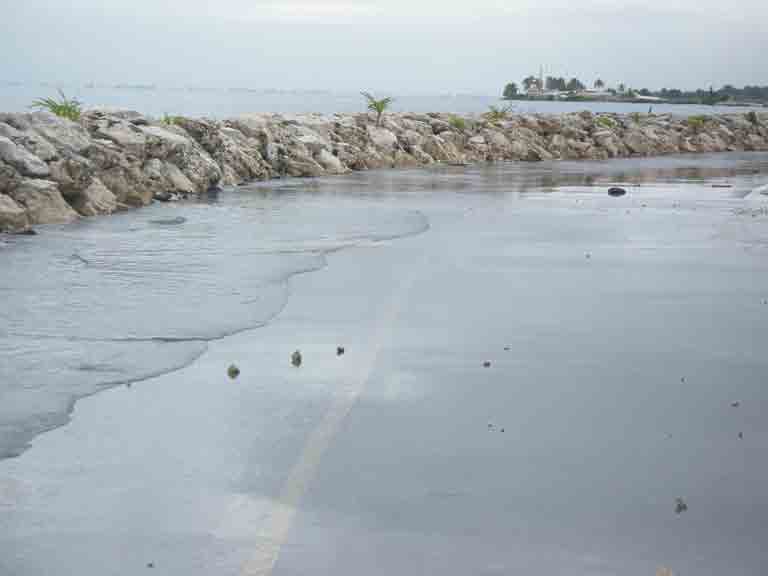I’ve seen a flurry of interesting information about sea level rise in Majuro this past week. Though it doesn’t constitute an authoritative report, I thought that some of you would like to see what we’re working with.
First, I finally located those photographs of the spring tide flowing through the revetment at the new airport fire station in Majuro. This only happens one week out of the year, and really only during El Nino years, but nobody living on Majuro can recall it happening at all before.
Second, good friend Pat Campanella at Lyon Associates shared this article with me:
Third, the guys at Lyon shared some personal observations about the situation and how it affects their engineering designs in their June 2013 edition of the Imprint newsletter. I find that newsletter to be one of the best in our industry, mainly because of the interesting geographic reach of their practice but also because it’s brief and lighthearted, something to which I can only aspire. I encourage everyone to subscribe.
Climate change and damaging sea level rise does not manifest as a gradual, recognizable creeping up of the waterline at the shore. Rather, as the article describes, damaging sea level rise affects developed coastlines as (apparently) sudden storm-related erosion and inundation. Damage occurs over a period of hours, much too short to allow any proper preparations. It will do things like flood the airport at Majuro and cut off air access for most of the country. It will suddenly flood New York subway tunnels that have never flooded before. Just because higher water levels are not damaging our infrastructure in between storms doesn’t excuse us, the engineers responsible for defending that infrastructure, while we have time.
Problems need to be recognized and prioritized before they can be solved. Solutions to a problem of this magnitude will require significant time and treasure, which requires significant political will. Although we are experiencing more unprecedented weather in populated areas (heat waves in Europe, drought in Texas, hurricanes making landfall in Manhattan, and the intense rain in Ontario that fell yesterday), the general population still views these events as isolated, unrelated incidents that hopefully will just go away on their own. People are terrible at recognizing long-term threats. The problems on Majuro and other low island nations are now frequent enough that people familiar with the issues can recognize them for what they are, an pattern of increasingly damaging weather events that are all related to the higher sea level.
A few civil engineering projects are recognizing and addressing this trend, like the Treasure Island Redevelopment Project in San Francisco Bay and the Maeslantkering storm surge barrier at Rotterdam Harbor. Widespread recognition necessary to mobilize political will, though, is not keeping pace with the problem. Low island nations like the Republic of the Marshall Islands are a critical bellweather for a pattern of increasingly incursive storm damage before it escalates and regularly affects continental shores. The observations that Lyon Associates is collecting are a valuable a tripwire at the perimeter, offering us a warning that something bad is coming. We have time to make preparations, harden our infrastructure, even change land use patterns on vulnerable coastlines, but only if we listen for and act upon the warning that Majuro is providing.
